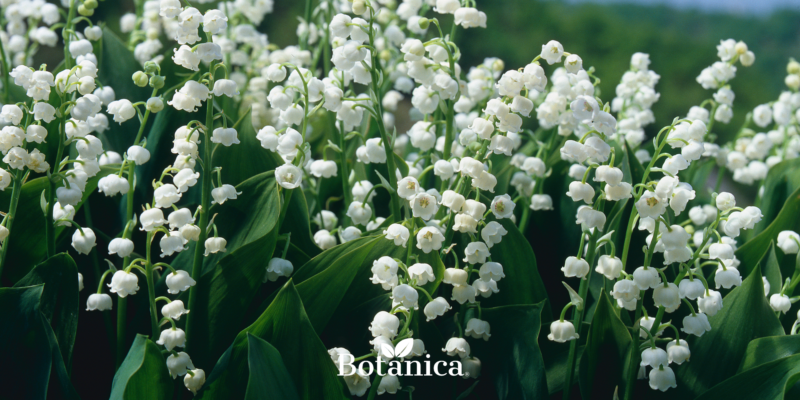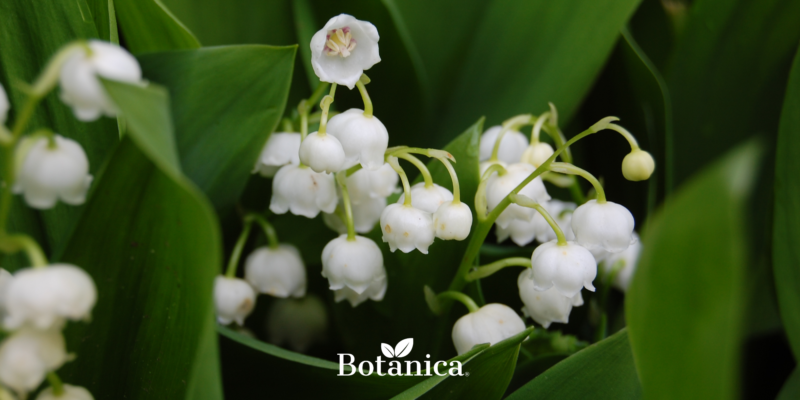
Lily of the Valley – Everything You Need to Know
Lily of the valley (Convallaria majalis) is one of the most recognizable spring plants, loved by gardeners and flower enthusiasts for its sweet fragrance and small, bell-shaped flowers. Though modest in size, it can bring a unique atmosphere of subtlety and elegance to any garden. If you’re wondering how to grow and care for lily of the valley in your garden, below are some tips to help this plant delight you with its appearance and scent for many seasons to come.
1. Characteristics of Lily of the Valley
Lily of the valley is a perennial plant from the asparagus family (Asparagaceae). It is characterized by:
-
Small, bell-shaped white flowers, sometimes (though rarely) with a pinkish hue;
-
A distinct, sweet scent that attracts bees and other pollinators;
-
Underground rhizomes that allow it to spread easily and form a beautiful ground cover in the garden;
-
Seasonality – it usually blooms in May (hence the name), and its leaves gradually yellow and wither, preparing for winter dormancy.
It’s important to remember that all parts of the plant, including the flowers and leaves, are toxic, so caution is advised when planting it—especially if children or pets are present in the garden.
2. Location and Soil
Lily of the valley grows best in:
-
Partial shade or shade – this plant prefers spots sheltered from direct, strong sunlight. It thrives under trees or near taller shrubs that provide protection from excessive sun exposure.
-
Humus-rich, moist but well-drained soil – maintaining consistent moisture is key, especially during the period of active growth. However, too much water can cause the rhizomes to rot, so the soil should have good drainage.
Before planting lily of the valley, it’s a good idea to enrich the soil with compost or decomposed bark. This improves soil structure and provides the plant with the nutrients it needs.

3. Planting and Propagation
Lily of the valley spreads through rhizomes, which makes it easy to propagate. If you want to plant it in your garden, you can:
-
Divide existing clumps – dig up the plant and divide the rhizomes into smaller sections, making sure each has at least one healthy bud (known as an “eye”).
-
Buy seedlings – garden centers offer seedlings or rhizomes for planting. Make sure the material is fresh and free of mold or damage.
The best time to plant lily of the valley is early spring or fall, when the soil is adequately moist. Remember to:
-
Plant the rhizomes about 2–3 cm deep
-
Leave a gap of several centimeters between them so the plant has room to spread
4. Care
Lily of the valley doesn’t require complicated care. Here are the basic maintenance tasks worth doing:
-
Watering – maintain moderate soil moisture, especially during dry periods. Soil that is too dry can inhibit growth and blooming.
-
Fertilizing – every few years you can enrich the soil with compost or organic fertilizer to maintain its fertility. However, lily of the valley is not very demanding in terms of feeding.
-
Growth control – lily of the valley can spread vigorously, so if you don’t want it to take over the entire area, regularly remove new rhizomes or install a root barrier.
-
Protection against diseases and pests – lily of the valley is generally resistant, but if you notice discoloration or pests on the leaves, consider:
-
Using natural plant protection products
-
Ensuring proper moisture and soil drainage to prevent problems
-
5. Use in the garden
Lily of the valley is ideal for:
-
Naturalistic woodland gardens – it thrives in the shade of trees and shrubs
-
Shaded garden beds – it pairs beautifully with other shade-loving plants like hostas and ferns
-
Ground cover in tough spots – great for areas under large trees where other plants may struggle
Thanks to its strong, distinctive scent, lily of the valley is also grown for decorative purposes. Its charming flowers are perfect for:
-
Bouquets
-
Floral arrangements
Just remember to handle it with care due to its toxic properties.

6. Common Problems and Tips
-
Not blooming: If your lily of the valley isn’t producing flowers, it may be growing in soil that’s too dry or in a spot with too much direct sunlight. Increasing soil moisture and providing partial shade should help encourage blooming.
-
Excessive spreading: Over time, lily of the valley can form dense clumps and take over more space than intended. If you want to keep it contained, regularly check its rhizomes and remove any excess growth.
-
Yellowing leaves: After flowering, it’s normal for the leaves to turn yellow and wither as the plant prepares for dormancy. This is a natural process and doesn’t require intervention.
Summary
Lily of the valley is a charming spring plant that brings a unique atmosphere to the garden. Easy to grow, thriving in shady spots, and requiring only moderate care, it’s a great choice for anyone looking to add subtle beauty to their outdoor space. Just remember its toxic properties and take precautions—especially if you have children or pets.

 Deutsch
Deutsch Nederlands
Nederlands Polski
Polski Українська
Українська
